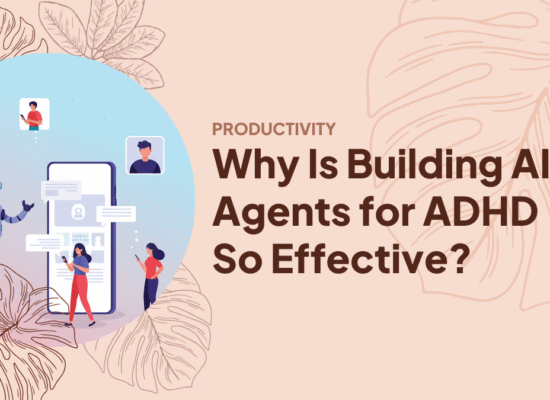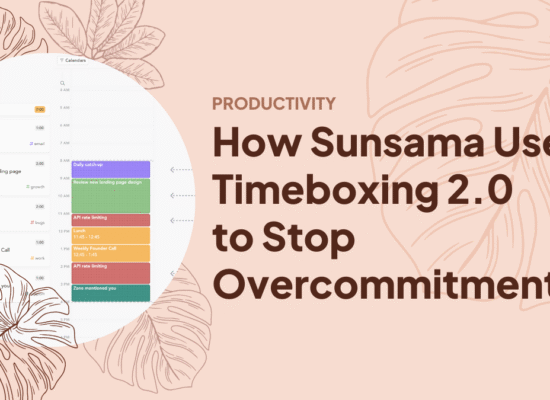Table of Contents
I’ve always believed that journaling is more than just recording thoughts. It’s a conversation with yourself that creates space for growth, reflection, and creative exploration. Discovering creative ideas for digital journaling allowed me to enhance this journey. When I first discovered digital journaling, something remarkable happened.
My scattered thoughts found structure. My creative ideas gained permanence. My personal growth became trackable.
The digital canvas offered something traditional journals couldn’t: limitless possibilities for expression and organization. As someone who balances technical precision with creative development in my marketing work, I immediately recognized the parallel in digital journaling.
Digital journaling has grown beyond simple text entries into a multimedia experience that’s transforming personal expression. Users now integrate photos, videos, audio recordings, and various digital media, adding entirely new dimensions to self-reflection and creative documentation. This evolution has revolutionized how we express ourselves by merging traditional practices with modern capabilities.
The numbers confirm what many of us already feel – creative ideas for digital journaling aren’t just a trend; they’re becoming essential tools for personal development and creativity. The digital journal apps market is projected to grow from $6.5 billion in 2025 to over $19.3 billion by 2035, with an impressive 11.4% compound annual growth rate.
But with so many options available, how do you transform a basic digital journal into something truly exceptional?
Why Digital Journaling Matters Now
Before diving into creative techniques, let’s understand why digital journaling has become increasingly relevant. In our hyper-connected world, finding authentic ways to process thoughts and experiences has never been more important.
Digital journaling offers unique advantages that traditional methods simply can’t match:
- Accessibility anywhere. Your journal lives across all your devices, ready whenever inspiration strikes.
- Enhanced organization. Tags, categories, and search functions make finding past entries effortless.
- Multimedia integration. Combine text, images, audio, and video for richer expression.
- Privacy and security. Password protection and encryption keep your thoughts private.
- Environmental consciousness. Reduce paper consumption while maintaining the journaling practice.
The daily journaling benefits extend beyond mere record-keeping. Research shows consistent journaling can reduce stress, improve emotional regulation, and enhance cognitive processing – benefits particularly valuable for those with adult ADHD who may struggle with organizing thoughts and managing emotions.
I’ve found that digital journaling creates a perfect intersection between technological convenience and authentic self-expression. It’s where structure meets creativity, where organization enhances rather than limits imagination.
Now, let’s explore five creative approaches that will transform your digital journaling practice.
5 Creative Ideas for Digital Journaling

1. Create Immersive Multimedia Entries
Text alone captures thoughts, but multimedia creates experiences. Digital journaling allows you to document life in multiple dimensions, creating richer, more immersive entries.
I’ve discovered that combining different media types creates entries that trigger more complete memories when revisited. A photo captures the scene, audio preserves the ambient sounds, and text provides context and emotional reflection.
Try these multimedia approaches:
- Voice memos with text annotations. Record your thoughts naturally through speech, then add written reflections afterward. This creates a dialogue between your spontaneous and reflective selves.
- Photo sequences with narration. Document processes or experiences through a series of images with accompanying text that tells the story behind them.
- Ambient audio backgrounds. Record the sounds of your environment before writing. This creates a sensory time capsule that enhances memory recall when revisiting entries.
- Video snippets with written reflections. Capture brief video moments and pair them with deeper written analysis of what those moments meant to you.
Apps like GoodNotes and Notion allow users to incorporate voice recordings, photos, digital stickers, and handwriting into entries, creating more expressive journal experiences. This multimedia approach transforms simple documentation into rich, multisensory archives of your experiences.
2. Implement Hybrid Journaling Systems
Digital and analog journaling methods each have unique strengths. Why choose between them when you can combine their powers?
Hybrid journaling systems that merge digital convenience with analog creativity are emerging as a powerful trend in personal documentation. This approach leverages the searchability and structure of digital tools while preserving the creative freedom and tactile experience of handwritten journaling. The result is a journaling practice that offers the best of both worlds.
I implement hybrid journaling through several methods:
- Handwritten pages digitized and organized. Write in a physical notebook, then scan or photograph important pages to incorporate into your digital system.
- Digital templates printed for handwork. Create or download digital templates, print them for handwritten completion, then scan back into your digital journal.
- Physical artifacts digitally preserved. Incorporate ticket stubs, dried flowers, or other physical mementos by photographing and adding them to relevant digital entries.
- Handwritten reflections on digital content. Print selected digital journal entries and add handwritten notes or drawings in the margins before re-digitizing.
This approach creates a tactile connection to your journaling practice while maintaining the organizational benefits of digital systems. The physical act of writing activates different cognitive processes than typing, potentially unlocking different insights.
3. Design Custom Templates for Different Purposes
Generic journal pages rarely capture the specific dimensions of what you want to track or explore. Creating purpose-built templates transforms journaling from general reflection to targeted personal development.
I’ve found that different aspects of life benefit from different journaling structures. By designing custom templates, you create frameworks that guide reflection in meaningful directions.
Consider developing templates for:
- Project development journals. Track progress, challenges, solutions, and next steps for creative or professional projects.
- Emotional intelligence tracking. Record emotional responses, triggers, patterns, and growth opportunities.
- Learning journals. Document new concepts, applications, questions, and connections to existing knowledge.
- Gratitude and appreciation. Structure entries to focus on positive experiences, personal growth, and moments of joy.
- Decision-making frameworks. Create templates that guide you through important choices with prompts for options, potential outcomes, values alignment, and intuitive responses.
Digital platforms like Notion excel at this approach, allowing you to create highly customized workspaces that serve specific journaling needs. The structure provided by templates reduces the friction of starting new entries while ensuring consistency in your practice.
Exploring the art of digital bullet journaling takes this template concept further, combining rapid logging, task management, and creative expression. This structured yet flexible system has proven particularly beneficial for Filipino women with ADHD seeking to balance cultural expectations with neurodivergent thinking patterns.
4. Implement Visual Thinking Methods
Not all thoughts flow linearly. Visual thinking techniques can unlock insights that traditional writing might miss.
Digital journals offer unique advantages for visual thinkers. Unlike paper journals with space limitations, digital canvases can expand infinitely, allowing complex visual systems to grow organically.
I regularly incorporate these visual thinking methods:
- Mind mapping. Start with a central concept and branch outward, creating a visual representation of connected ideas. Digital tools allow these maps to expand indefinitely and be reorganized easily.
- Concept mapping. Similar to mind mapping but with more structured relationships between ideas, often using lines with labels to define connections.
- Visual metaphors. Represent abstract concepts or emotional states through images or diagrams that capture their essence.
- Sketchnoting. Combine simple drawings, text, and structural elements to create visual notes that engage multiple processing centers in the brain.
- Timeline visualization. Create visual representations of time periods, projects, or personal growth journeys that reveal patterns not obvious in text alone.
Apps like Microsoft OneNote provide flexible canvases for these visual approaches, allowing you to combine typed text, handwritten notes, drawings, and imported images in freeform layouts. This flexibility supports more intuitive thinking processes.
5. Create Dialogue Through Prompts and AI
Sometimes the blank page presents the biggest obstacle to meaningful journaling. Strategic prompts and emerging AI tools can transform monologue into dialogue, creating a more dynamic journaling experience.
I’ve found that the right prompt can unlock thoughts I didn’t know I had, guiding reflection into unexplored territory.
Consider these approaches:
- Curated prompt collections. Develop or gather question sets aligned with specific growth areas or interests. Rotate through them systematically or choose intuitively based on current needs.
- Prompt randomizers. Create digital systems that present random prompts from your collection, introducing serendipity into your practice.
- Progressive prompt sequences. Design series of connected prompts that build upon each other, guiding deeper exploration of important themes over time.
- AI-assisted reflection. Experiment with AI tools that can analyze your entries and generate insightful questions based on your content, creating a form of dialogue with your own thoughts.
AI-powered journaling is transforming the practice into a powerful tool for mental health and self-discovery. These intelligent platforms can identify emotional patterns in writing, generate personalized prompts, and provide insights about thoughts and behaviors over time.
The dialogue approach transforms journaling from simple recording to active discovery. The right question at the right moment can reveal connections and insights that might otherwise remain hidden.
Maintaining Consistency in Digital Journaling
Even the most creative journaling system fails without consistent practice. Digital tools offer unique advantages for building and maintaining habits.
I’ve developed several strategies that leverage digital capabilities to ensure regular journaling:
- Strategic notifications. Set reminders during times when you’re most receptive to reflection, not just at standard intervals.
- Entry streaks and visualizations. Use apps that track consistency and display your journaling streaks, tapping into the psychology of unbroken chains.
- Micro-journaling options. Create templates for ultra-short entries (under 2 minutes) for busy days, removing the pressure of lengthy writing.
- Cross-platform accessibility. Ensure your journaling system works across all devices, eliminating excuses based on which technology is available.
- Automated entry starters. Set up systems that pre-populate entries with date, time, location, weather, or other contextual information to reduce startup friction.
The key insight I’ve gained is that consistency matters more than perfection. A brief, imperfect entry maintains the habit, while skipping days can quickly erode the practice altogether.
The Future of Digital Journaling
As we look ahead, digital journaling continues to evolve in exciting ways. The integration of artificial intelligence, augmented reality, and increasingly sophisticated multimedia tools promises to further transform how we document and reflect on our lives.
I’m particularly interested in these emerging trends:
- Context-aware journaling. Apps that recognize your location, activities, or even emotional states and offer relevant prompts or templates.
- Immersive memory experiences. VR and AR technologies that allow you to revisit past entries in more experiential ways.
- Collaborative reflection spaces. Secure platforms for shared journaling experiences with trusted connections, creating dialogue around mutual growth.
- Insight analytics. Advanced pattern recognition that identifies trends in your thinking, emotional states, or behaviors over time.
Digital journaling has gone mainstream across all age groups and lifestyles, offering a low-cost yet rewarding creative outlet during economic uncertainty. For professionals, it has become a way to develop valuable workplace skills like organization, time management, and written communication.
Final Thoughts
Digital journaling represents the perfect intersection of technology and personal growth. When approached creatively, it transcends simple record-keeping to become a powerful tool for self-discovery, skill development, and meaningful documentation of your journey.
The five creative ideas for digital journaling I’ve shared – immersive multimedia entries, hybrid systems, custom templates, visual thinking methods, and dialogue through prompts – each offer unique pathways to deepen your journaling practice.
What makes digital journaling truly transformative is its flexibility. Unlike traditional methods constrained by physical limitations, digital platforms adapt to your evolving needs, growing alongside you.
I encourage you to experiment with these approaches, combining elements that resonate with your personal style and goals. The most effective journal is the one you’ll actually use – so design a system that feels both inspiring and sustainable.
Key Takeaways
- Digital journaling combines multimedia elements to create richer, more immersive self-expression experiences.
- Custom templates and visual thinking methods help organize thoughts and unlock creativity in ways traditional journals cannot.
- AI-assisted journaling transforms monologue into dialogue, revealing insights you might otherwise miss.
Start Your Digital Journaling Journey Today
Ready to transform your journaling practice? The digital canvas awaits your unique voice and perspective. Start with just one of the creative approaches shared in this article, then gradually incorporate others as your practice evolves.
FAQs
Digital journaling provides customizable structure and multimedia tools that help organize scattered thoughts and accommodate different processing styles common in ADHD.
For beginners, apps like Day One (iOS/Android) or Journey (cross-platform) offer intuitive interfaces with core features like text, photos, and location tagging without overwhelming complexity.
Consistency matters more than frequency—start with 2-3 times weekly at moments when you’re naturally reflective, then adjust based on what works for your lifestyle and goals.







No Comment! Be the first one.